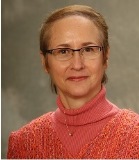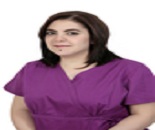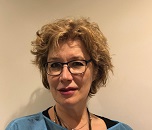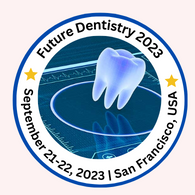About conference
It's an honour to welcome you to the official website of 29th International Conference On Dental Research and Future Dentistry. which is going to be held in San Francisco, USA during September 21-22, 2023. The theme of this year's meeting is "Promulgating latest innovations & application in the field of Dentistry" which will provide an international platform for discussion of present and future challenges in dental health, dental education, continuing education and expertise meeting. World-leading health practitioners, clinicians, educators, and researchers will present cutting-edge and practical clinical techniques based upon widely accepted evidence and will introduce new and emerging research.
Why to attend?
The latest techniques, developments, and the latest updates in Dental Health and Dental Practice are hallmarks of this conference. It is learning, sharing and networking platform for Dentists, Dental Hygienists, Oral Hygienists, Dental Assistants, Dental Practice Managers, Dental Marketing Managers, Dentist / Practice Owners, Office Managers, Marketing Executives, Group Practice Executives and other members of the dental team about Dentistry and its advances. This is your best opportunity to reach the biggest assemblage of eminent from the Dental community. Conduct presentations/ workshops, distribute information, meet with current and potential doctors, make a splash with new developments, and receive name recognition at this 2-days event.
CDE ensures that the dentists are provided with the latest diagnostic, preventive and treatment methods in the industry. Dentists who fail to keep pace may mean they're actually falling behind in the quality of dental care they provide. As an Oral Surgeon, these frequent changes challenge you to learn and adopt new ways to improve patient care.
What's New?
Future Dentistry2023 Conference includes international attendee workshops, lectures and symposia, including a designated registration area, a refreshment break and gala lunch. Dentists can join the Future Dentistry 2023 as an international member to receive discounts on registration. So come and join leading experts and allied professionals from September 21-22-2023 in San Francisco to keep up with the rapidly accelerating pace of change that is already having an impact on the field of Dental Oral Health, and will continue to in the future.
Target Audience:
-
Dental Surgeons
-
Principal Dentist's
-
Dental Nurses
-
Orthodontists
-
Periodontics
-
Dentists
-
Dental House Officers
-
Dental and Oral Health Researchers, Faculty and Students
-
Dental and Oral Health Associations, Societies and Universities
-
Dental or Oral Hygienists & Therapists
-
Dental Treatment Coordinators
-
Dental Partners or Owners
-
Dental Wholesalers, Dealers and Distributors
-
Manufacturing Medical Devices Companies
-
Procurement and Management teams from Corporate Dental Organizations
-
Dental Business/Practice Managers.
Potential Participants:
Future Dentistry 2023 welcome attendees from all leading dental clinics, dental universities, clinical research institutions and dental companies to share their research experiences on all aspects of this rapidly expanding stream and thereby, providing a showcase of the latest research and provide a better health care to the world. This is designed for practicing dentists, nurses, physicians in training and other oral healthcare professionals interested in the latest advances and techniques in the field. Another segment of participants is Dental researchers, Dental educators, Clinical organizations, Educational institutes, and Business leaders in the health sector worldwide.
ADA CERP is a service of the American Dental Association to assist dental professionals in identifying quality providers of continuing dental education. It never approves or endorses individual courses or instructors, nor does it imply acceptance of credit hours by boards of dentistry.
This continuing education activity has been planned and implemented according to the standards of the ADA continuing Education Program (ADA CERP) through joint efforts between ESOI and Conference Series LLC Ltd
Sessions and Tracks
Track 01: Dental Hygiene
The practice of keeping the mouth and teeth clean to prevent dental problems, most commonly, dental cavities, gingivitis, caries, periodontal (gum) diseases and bad breath. A dental hygienist is a licensed dental professional who is registered with a dental association or regulatory body within their country of practice.
Track 02: Cosmetic Dentistry
Improves the appearance of a person's teeth, gums and smile. It primarily focuses on improvement dental aesthetics in color, position, shape, size, alignment and overall smile appearance. The treatments can be used to straighten teeth whitening, full mouth reconstruction and smile makeover. Cosmetic treatments include crowns, bridges, fillings, dentures, dental implants, bonding, veneers and tooth whitening.
-
Full mouth reconstruction
-
Dentures
-
Fillings
-
Teeth whitening
Track 03: Preventive Dentistry
The practice of caring for one's teeth to keep them healthy. This helps to avoid cavities, gum disease, enamel wear, and more. Preventive dentistry prevents people from developing dental problems later on. Cavities, gingivitis, enamel loss, and periodontitis can all be avoided or mitigated with proper dental care.
Track 04: Nano Dentistry
Said to be the future of dentistry where all procedures are to be performed using Nano robots that may become a replacement to the present day dental assistants, technicians & hygienists. The discovery of Nano dental materials such as Nano powders and Nano composites reinforced with Nano fillers are the most rapidly developing group of materials with excellent prospective for application in the field of dentistry. Nanostructured yttrium stabilized zirconium oxide ceramics is widely used for fabrication of crowns, bridges, inlays and other dental elements for which high strength, durability and better aesthetics are required. Some nanomaterials have also been developed to help with the remineralisation of the teeth after significant decay. Nano-dentistry aims to manipulate and fine tune particle to create unique with novel properties and advances in dentistry.
-
Dentine Hypersensitivity
-
Nano Composites
-
Nanoencapsulation
-
Diagnosis of Oral Cancer
Track 05: Dental Anesthesia
The specialty of dentistry that deals with the management of pain through the use of advanced local and general anesthesia techniques. It is the discipline in dentistry that manages pain and anxiety through the use of local anesthesia, sedation, and general anesthesia. Dental Anesthesiology educates graduate, pre-doctoral, and dental hygiene students in the management of pain, fear, and anxiety associated with dental treatment. Dentist anesthesiologists trained to provide the entire spectrum of anesthetic services, which generally range from local anesthesia through general anesthesia, for a wide range of dental and surgical procedures. Faculty research involving dental anesthesiology has focused on the clinical efficacy and safety of anesthetics when used in both healthy and medically-compromised patients.
-
Sedation Techniques
-
Use of lasers
-
Pain free dentistry
-
Dental Radiology
Related Associations:
Track 06: Dental Nursing
Nursing is a profession of the health care sector attentive on the care of individuals, families, and communities so they may attain, conserve or recover excellent health and quality of life. A Dental Nurse supports the dentist in all aspects of patients’ dental care. As a dental nurse, you may help with reception work and could help any member of the dental team clinical and dental technicians/technologists, hygienists and therapists – treat patients of all ages. Some specialised for a check-up while others will have more complicated treatment. You’ll need to reassure people and put them at calm, while supporting the team in all aspects of patient health or care. In a dental practice you will welcome patients and provide direct backing with the treatment itself: Taking responsibility for the decontamination of instruments, upholds dental practicing equipment ensuring that all relevant materials and supplies are in place, looking after patient records including the notes when the dentist is checking a patient, working closely with the dentist, responding quickly to queries and generally keeping the surgery ready for use.
Track 07: Oral Implantology
Is intended to promote study and scientific research in the field of dental implantology and allied biomedicaz disciplines at Dental Dubai. It provides valuable information to general dentists, oral surgeons, prosthodontics, periodontists, scientists, clinicians, laboratory owners and technicians, manufacturers, and educators during Dentistry workshop and Dentistry conferences. Dental Implant basics, prosthetics, pharmaceuticals, and the latest research in implantology, implant surgery, and advanced implant procedures.
-
Techniques
-
Risk and complications
-
Applications
-
Innovation
Track 08: Prosthodontics
The branch of dentistry concerned with the design, manufacture, and fitting of artificial replacements for teeth and other parts of the mouth. Maxillo-facial prosthetics, Implant-based prostheses, Management of temporo-mandibular disorders, Dentures, Crowns, bridges and full or partial dentures are just some of the procedures that can help you regain your smile and improve your appearance and self-confidence. Another option is dental implants, a more permanent solution that has improved greatly over the last ten years, thanks to the pioneering techniques of prosthodontics.
-
Maxillo-facial prosthetics
-
Implant-based prostheses
-
Management of temporo-mandibular disorders
-
Dentures
Track 09: Oral and Maxillofacial Surgery
Oral-Maxillofacial Surgery is a surgical specialty which involves the diagnosis, surgery and adjunctive treatment of diseases, injuries and defects involving both the functional and aesthetic aspects of the hard and soft tissues of the oral and maxillofacial region. The temporomandibular joints (TMJs), jaw joints, are the foundation for jaw position, facial growth and development, function, dental occlusion, facial balance and comfort. If the TMJs are not stable and healthy (non-pathological), patients requiring orthognathic (corrective jaw) surgery may have unsatisfactory outcomes relative to function, esthetics, dental occlusal and skeletal stability, and pain. A review of 1369 consecutive TMJ patients referred to Dr. Larry Wolford’s practice revealed an age range of 8 to 76 years at initial evaluation, with 78% of the patients female and 22% male. Interestingly, 69% of the patients reported the onset of their TMJ problems during the teenage years. Therefore, TMJ pathology predominantly develops in teenage females, although may not manifest itself until much later.
-
Dentoalveolar surgery
-
Surgical correction of Maxillofacial Skeletal deformities
-
Gum lift
Track 10: Endodontics
Is the Branch of dentistry, concerned with the morphology, physiology, and pathology of the human tooth, and in particular the dental pulp, root and peri-radicular tissues. The study and practice of endodontics includes the biology of the normal pulp, crown, root and peri-radicular tissues and the etiology, prevention, diagnosis and treatment of diseases and injuries that affect these tissues. Root canal therapy is one of the common procedures followed in endodontic treatments. Also includes treatment of cracked teeth and dental trauma. Endodontic treatment is done to save the teeth from diseased dental pulp. Regenerative endodontics uses the concept of tissue engineering to restore the root canals to a healthy state.
-
Endodontic Instruments
-
Pathologies of Pulp and Periapex
-
Lasers in Endodontics-Application of Diodes
-
Wave-one in Endodontics
-
Nickel-Titanium Rotary Endodontics
-
Root Canal Therapy in Atypical Teeth
-
Regenerative Endodontics
-
Access Cavity Preparation
-
Cleaning and Shaping of Root Canal System
-
Asepsis in Endodontics
-
Diagnostic Procedures
Track 11: Orthodontics
Is a branch of “dentistry” that specializes in treating patients with improper positioning of teeth when the mouth is closed (malocclusion), which results in an improper bite. Orthodontics also includes treating and controlling various aspects of facial growth(dentofacial orthopedics) and the shape and development of the jaw. An orthodontics specialist is called an orthodontist. It uses a range of medical dental devices, including headgears, plates, braces, Implants, Cleft and Palate etc and use the recent advances in orthodontics like invisalign techniques.
-
Recent Advances in Orthodontics
-
Invisalign Techniques
-
Implants in Orthodontics
-
Management of Cleft Lip and Palate
-
Management of temporo-mandibular disorders
Track 12: Paediatric Dentistry
Paediatric dentists are dedicated to the oral health of children from infancy through the teen years. They have the experience and qualifications to care for a child’s teeth, gums, and mouth throughout the various stages of childhood. Paediatric dentists provide comprehensive oral health care that includes the Infant oral health exams, Paediatric Endodontic, Dental caries and Paediatric oral health research.
-
Management of traumatic injuries to children
-
Advanced research in pediatric dentistry
-
Diagnosis/imaging & Use of lasers in children
-
Preventive & Operative dentistry in children
Track 13: Dental Surgery
Gingivectomy is the removal of gum tissue (gingiva) by surgery. These dentists specialize in treating gums and the other structures that support teeth. Osseous surgery is a type of surgery that reshapes the bone that holds one or more teeth in place. Osseous surgery reshapes the bone to get rid of the defects. Gingival flap surgery is a type of gum procedure. The gums are separated from the teeth and folded back temporarily. This allows a dentist to reach the root of the tooth and the bone.
-
Gingivectomy
-
Osseous Surgery
-
Gingival Flap Surgery
-
Apicoectomy
-
Pulpectomy
-
Pulpotomy
-
Botox dental therapeutics
Track 14: Dental Marketing
Every interaction between your dental practice and a patient is a component of dental marketing. In some cases, this will encompass concrete details like the way your office staff answers the phone or the list of services you offer. The need for better dental marketing has increased with the public’s awareness, as well as industry need to develop better services. Because of the flood of information on the internet, average new patient is more aware and educated concerning the aesthetic options available today from a dentist. As a result, a higher quality dentist is being requested that .they have to develop a Comprehensive Marketing Strategy. Dental marketing program is not complete without comprehensive internet marketing. By now, most dental practices possess a fairly upscale website. The next key to your cosmetic dentistry marketing plan is to constantly enhance the user experience of website.
-
How to Develop a Comprehensive Marketing Strategy
-
How to Attract the Ideal Patients
-
Internet Marketing
Track 15: Geriatric Dentistry
Geriodontics is the delivery of dental care to older adults involving the diagnosis, prevention, and treatment of problems associated with normal aging and age-related diseases as part of an interdisciplinary team with other health care professionals.
-
Tooth Wear
-
Sedation and Restraint for Dentistry
-
Dental Radiography
Track 16: Forensic Dentistry and Dental Anthropology
Forensic odontology mainly involves the identification of an assailant by comparing a record of their dentition (set of teeth) with a record of a bite mark left on a victim. It is helpful for Dental identification, Age estimation and Oral and dental aspects. Dental Anthropology is a field of inquiry that utilizes information obtained from the teeth of either skeletal or modern human populations to resolve anthropological problems. Given their nature and function, teeth are used to address several kinds of questions. First, teeth exhibit variables with a strong hereditary component that are useful in assessing population relationships and evolutionary dynamics.
-
Forensic Odontology
-
Identification and methods
-
Dental identification
-
Age estimation
-
Personal abuse - Oral and dental aspects
-
Age estimation and Oral and dental aspects
-
Dental radiography/informatics
-
Identification in mass fatalities
-
Assessment of bite mark injuries
-
Assessment of cases of abuse (such as child, spousal or elder abuse)
-
Civil cases involving malpractice
Track 17: Tools and Techniques in Dentistry
Dentistry has seen massive improvements with respect to advancement from the traditional techniques to the digital world that has widened the scope of dental treatments and procedures. Dentists can now offer patients advanced choices like Laser “dentistry”, Esthetic “dentistry”, Digital dentistry and Implant dentistry. Digital dentistry tools and techniques used at present include the Laser applications, Dental implants and occlusal analysis, Forensic dentistry, Dental radiography/informatics, Robotic and digital dentistry and Imaging techniques for the craniofacial hard and soft tissues.
-
Imaging techniques for the craniofacial hard and soft tissues
-
Evolving instrumentations in dentistry
-
Robotic and digital dentistry
-
Sustained-release delivery systems for treatment of dental diseases
-
Laser applications for dental hygiene
-
Dental implants and occlusal analysis
-
Wear performance of dental ceramics after grinding and polishing treatments
-
Forensic dentistry
-
Dental radiography/informatics
Track 18: Dental Laboratory Materials and Processes
Deciding which dental materials, you need for your lab starts with determining what types of restorations you will be producing, and what processes, techniques and technologies you will be using to produce them. Whether your laboratory focuses on fixed crowns and bridges, removable restorations, implant-supported restorations, or orthodontics, it is highly likely you will need model materials including gypsums used to create study and working models. Few high-tech labs will 3D print their models or produce restorations without a model. Those labs will be using digital dental technologies and most likely will use CAD/CAM materials when producing restorations. Labs focused on fixed restorations will want crown and bridge materials including ceramic systems, stains and glazes, and possibly alloys. Labs focused on full and partial dentures will need removable materials such as acrylic resins and denture teeth.
-
Model, Cast and Die Materials
-
Gypsum Products
-
Waxes in Dentistry
-
Dental Investments and Refractory Materials
-
Abrasion and Polishing
-
Dental Casting and Metal Fabrication Procedures
-
Additive Manufacturing in Dentistry
Track 19: Oral Microbiology and Pathology
Oral microbiology is a complex ecological system where up to 700 species of microorganisms that have been identified. Some of the predominant groups present in the mouth include Streptococcus, Neisseria, Veillonella, Actinomyces and other obligate anaerobes. These organisms maintain a mutualistic relationship with the host by preventing pathogenic species from adhering to the mucosal surface. Oral microflorae can cause dental plaques and are also a common cause dental caries and periodontal disease . Oral disease in an individual can be caused due to a combination of lack of oral hygiene and factors influencing the oral microbial community structure, such as diet. An understanding of the oral environment and microbial interactions leads to understanding the main causes for the onset of oral diseases.
-
Dental caries
-
Dental plaque
-
Oral Bacteria
-
Oral Medicine
-
Osteoporosis and tooth decay
-
Adult Orthodontics to Resolve Spacing and Tissue Deficiencies
-
Dental plaque
-
Osteoporosis and tooth decay
-
Dental caries
Track 20: Current Concepts in Oral Health
Dentistry continues to change, particularly because of the advances in clinical dentistry, materials and technology. These changes offer opportunities for both patients and dental practices alike. Now patients can benefit from the advances in Clinical dentistry and dental practices can benefit from the opportunity to move their business in a forward direction. Dental practices need to constantly look at the available options. Dentists can now offer patients advanced choices like Laser dentistry, Esthetic dentistry, Digital dentistry and Implant dentistry. I find that dentists who are taking advanced clinical courses and utilizing technology are re-energized and enjoying dentistry more than ever before.
-
How can stem cells cure oral health
-
Cardiovascular Diseases and Dentistry
-
Antimicrobial factors in saliva: Ontogeny and relation to oral health
-
DNA vaccines show promise in preventing dental caries
-
Future trends in oral health and disease
-
Protein mediated enamel mineralization















